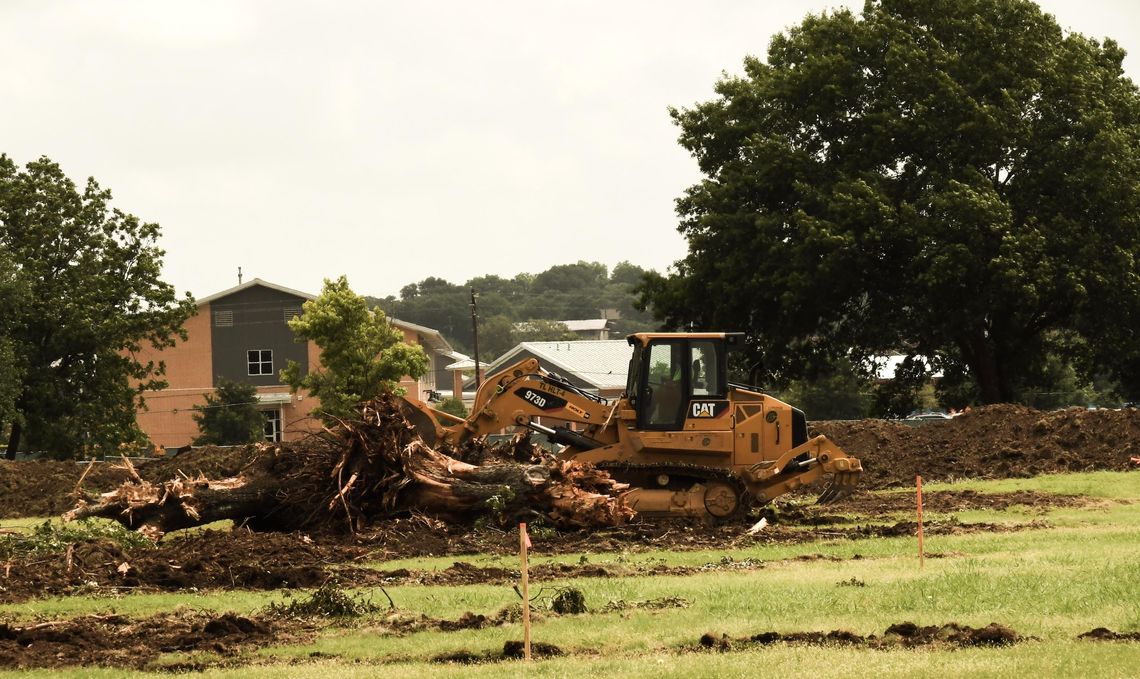Texas State University is clearing trees from its old golf course to make way for athletic fields, and many residents are unhappy about it.
The San Marcos Daily Record has received at least half a dozen phone calls within two days from people upset at the sight of trees being removed from the golf course this week. However, the clearing is not part of a new plan. The university closed the golf course after the October 2015 floods, which caused heavy damage at the course and its facilities. In 2016, the university announced that the course would close permanently and be converted to practice fields.
University spokesman Jayme Blaschke alluded to a recent San Marcos River Foundation (SMRF) newsletter that he said gives a good account of the changes that are occurring, including the tree clearing.









